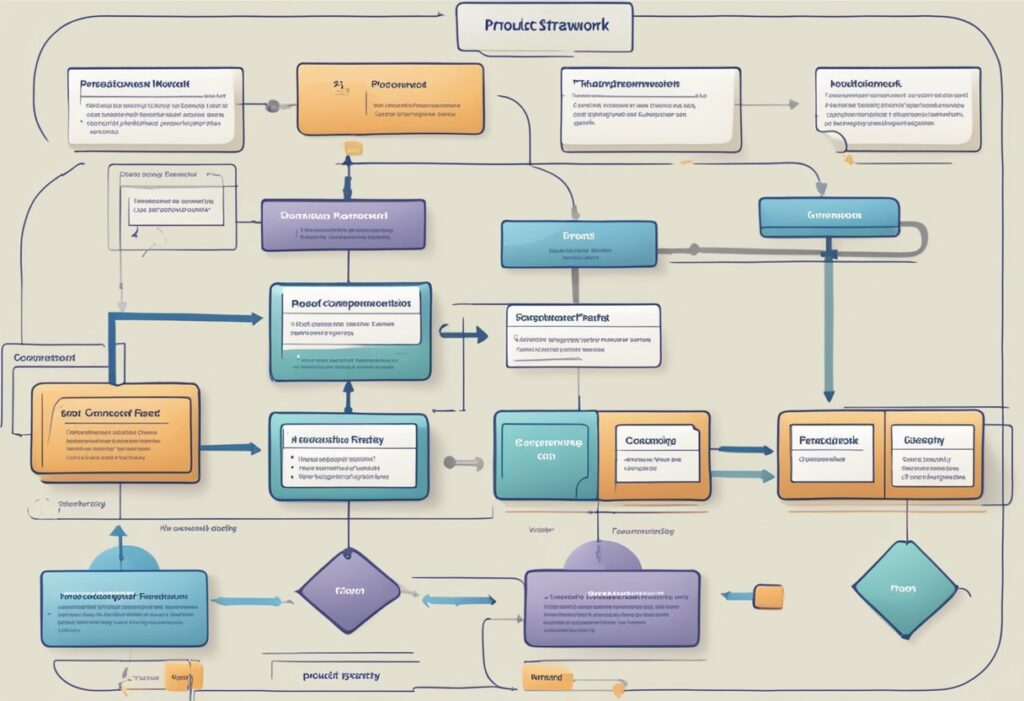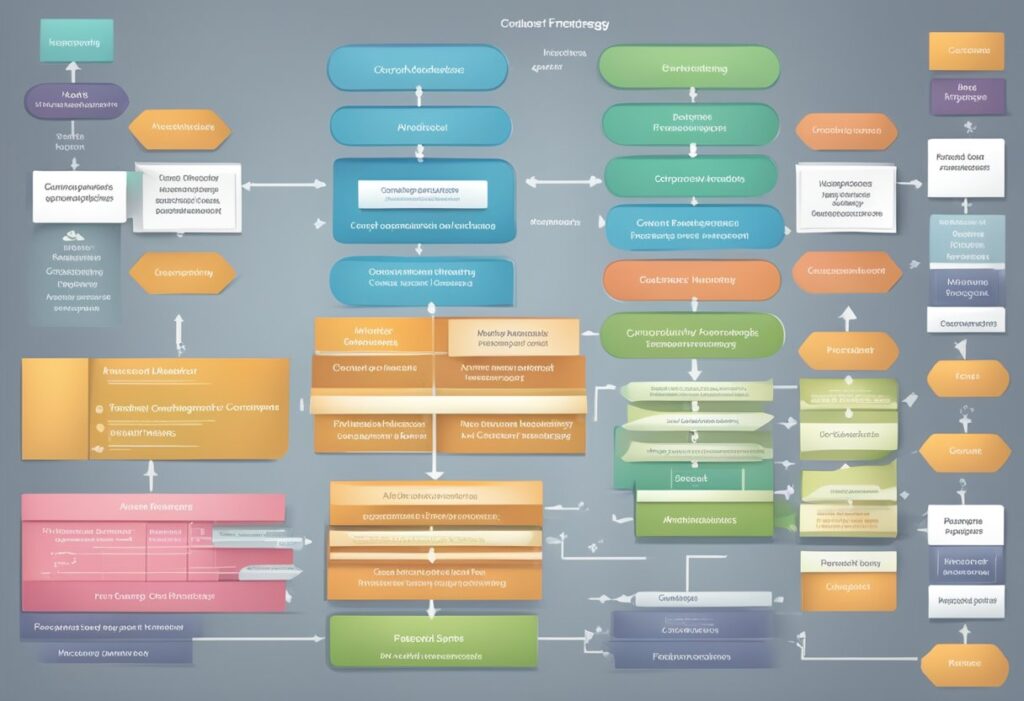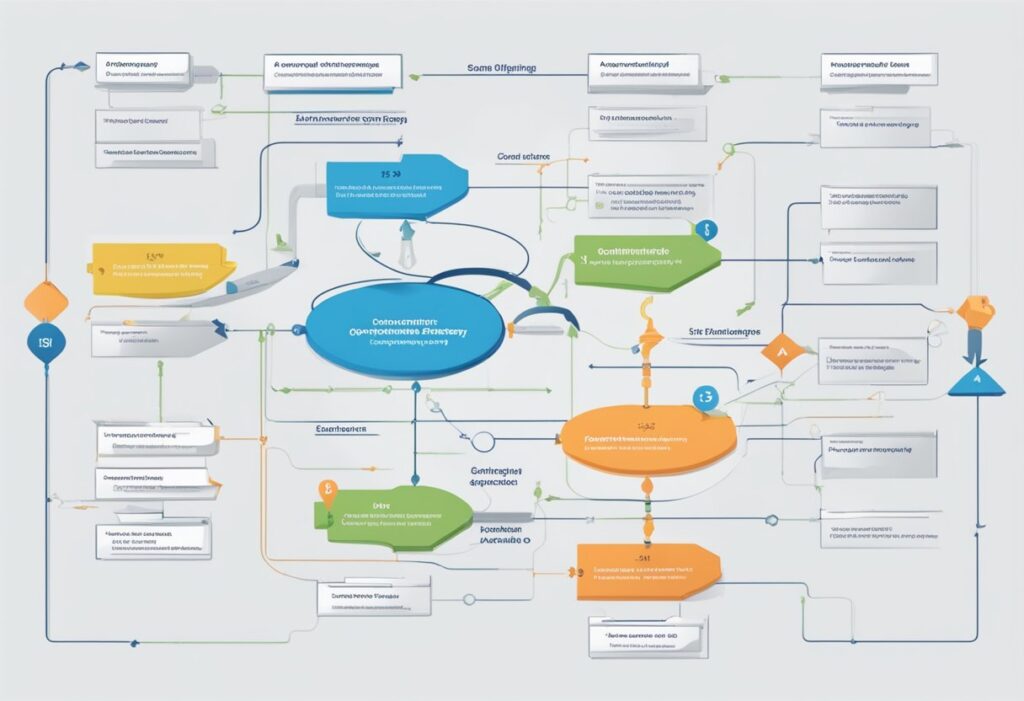In today’s whirlwind of a market, creating a **strong** go-to-market plan is like having a compass in a storm—it’s key to making sure a product or service takes off and keeps growing. This clever approach helps folks pinpoint their audience, craft a product plan that fits like a glove, and plot their grand entrance. Laying out a crystal-clear path from idea to market debut ensures everyone’s on the same page, uses resources smartly, and gets the word out about what makes the product or service **special**. Dive in and discover how this smart planning sets the stage for success.
Central to this approach is the construction of a comprehensive marketing plan that addresses all facets of the launch. It involves detailed market analysis, positioning, channel strategy, sales enablement, and customer acquisition tactics. After execution, measuring performance against objectives is critical for understanding the impact and making data-driven decisions to optimize and scale operations. Additionally, anticipating potential challenges and risks enables a company to be agile and responsive, ensuring long-term success in the marketplace.
Key Takeaways
- A go-to-market strategy framework is crucial for successful product launches and market entry.
- Execution of the strategy requires a comprehensive marketing plan and alignment across teams.
- Post-launch analysis and optimization are vital for long-term success and scaling.
Understanding Your Market
Before we dive into specific strategies, it’s crucial to grasp the importance of a solid understanding of the market. This encompasses conducting thorough market research, analyzing the competition, and accurately identifying the target audience. Each element is a cornerstone in crafting a go-to-market strategy that resonates with the market dynamics and consumer needs.
Market Research
We conduct comprehensive market research to gather actionable insights about the industry trends, customer preferences, and shifts in the market landscape. To understand the market comprehensively, we leverage both qualitative and quantitative research methods, such as surveys, interviews, and data analysis. This information helps in making informed decisions and tailoring our strategies to the market’s demands.
Competition Analysis
In analyzing our competition, we focus on identifying both direct and indirect competitors. This includes examining their market share, strengths, weaknesses, and strategic moves. Understanding the competitive landscape is essential for positioning our offerings effectively and finding opportunities to differentiate our products or services in the target market.
Target Audience Identification
Identifying our target audience is about more than just demographics; it’s about understanding the buyer personas at a deeper level. We define our buyer personas by their needs, behaviors, and pain points to create an ideal customer profile. This allows us to craft marketing messages and product offerings that truly resonate with them, leading to better engagement and conversion rates.
By focusing on these critical aspects, we solidify our market strategy framework, ensuring that our approach to the market is as effective and efficient as possible.
Developing the Product Strategy

When we develop a product strategy, it’s crucial that we first ensure our product aligns with market needs and clearly communicates its value. This sets the stage for defining a product’s place in the market and how we will convey its benefits to our target audience.
Defining Product-Market Fit
We begin by identifying and understanding the specific pain points our product addresses. It’s about ensuring that our product not only meets a need but does so in a way that resonates with our customer base. Product-market fit is achieved when our target customers are buying, using, and telling others about our product, which indicates that we’re meeting a significant demand effectively.
Value Proposition and Messaging
Next, we craft our value proposition to articulate the unique value our product provides. This isn’t just about listing features; it’s about clarifying how our product uniquely solves the customer’s problem or improves their situation. Our messaging must communicate this proposition coherently and compellingly, ensuring that all marketing and sales efforts accurately position the product in the minds of the consumers.
Planning the Market Entry

In our experience, successful entry into a market hinges on a well-crafted go-to-market strategy that aligns sales and distribution channels with a competitive pricing strategy. We view these elements as critical to determining the trajectory of a product’s success.
Go-to-Market Strategy Framework
A go-to-market strategy (GTM strategy) serves as the blueprint for positioning and selling a new product within a marketplace. It begins with identifying the customer segment and crafting a value proposition that resonates. We emphasize the need to tailor this strategy to the specifics of the product and the targeted market segment. When considering the sales cycle, we integrate the nuances of customer touchpoints, taking into account product complexity and buying behavior to inform the GTM strategy.
Sales and Distribution Channels
The selection of sales channels directly impacts the success of a product launch. We weigh the benefits of direct sales, recognizing the control and customer relationship benefits it offers, against the reach and cost-effectiveness of utilizing various distribution channels. In our framework, we analyze each channel’s fit with the product’s nature and market demand. Both sales channels and distribution are plotted methodically to ensure coverage and efficiency across the targeted markets.
Pricing Strategy
Our pricing strategy is developed through a rigorous assessment of the competitive landscape, cost structures, customer value perception, and market demand. We consider various models, such as penetration pricing or premium pricing, and choose the one that aligns with our overall strategic objectives. It’s imperative to balance profitability with market entry goals, ensuring the price point chosen reinforces the product’s value proposition and overall market positioning.
By focusing on these three foundational elements, we lay the groundwork to ensure a coherent approach to launching a new product.
Building the Marketing Plan
In crafting a marketing plan, it’s pivotal to fuse well-articulated strategies and meticulous execution. This blend ensures the allocation of marketing resources delivers optimal brand visibility and drives customer engagement.
Marketing Strategy and Tactics
Marketing Strategy: Our focus here is to define clear marketing objectives that align with the business goals. We choose our target market, position our brand accordingly, and set measurable objectives. For example, if increasing brand awareness in a new market by 25% within the first quarter is the goal, our strategy must be tailored to reach that specific audience effectively.
Marketing Tactics: Tactical execution involves a mix of activities such as email campaigns, SEO, and partnership outreach that operate within the framework of our strategy. We’ll break down complex goals into actionable steps, making sure each tactic has a KPI to measure performance.
Advertising and Promotion
Our Advertising: Shall leverage the power of both traditional mediums—like print and broadcasts—and digital channels, such as social media and PPC advertising. We will invest strategically, where the ROI is proven, and remain agile to adjust spend as we analyze campaign results.
Promotional Activities: Might range from online contests to in-store promotions. Each activity will be chosen based on its ability to reach our marketing objectives. For instance, social media contests can be an excellent way to increase engagement and deepen brand awareness among our target demographic.
Content Creation and Branding
Content Creation: Our content’s purpose is to resonate with our audience, reflect our brand’s ethos, and provide value. We will craft blog posts, videos, and infographics that not only inform and entertain but also encourage sharing to extend our brand reach.
Branding: Is integral to our content creation. Every piece of content should reinforce our brand identity through consistent use of tone, style, and imagery. This consistency ensures that when someone sees content from our brand, it is immediately recognizable, bolstering brand familiarity and trust.
We approach this plan knowing that it is the strength of our marketing strategy, combined with our focused tactics and creative advertising, that will enhance our branding efforts and ensure our content captivates and converts.
Executing the Product Launch
In executing the product launch, we ensure precise coordination and timing. Our approach meticulously aligns sales and marketing efforts with strategic milestones, considering the demands and expectations of our potential buyers.
Launch Timeline and Milestones
- Pre-Launch Phase: We set clear deadlines, ensuring that every task leading up to the launch aligns with our predefined timeline.
- Launch Day: This is a critical moment where all elements need to come together seamlessly. Our attention to detail during this pinnacle event is crucial for the successful introduction of our new product into the market.
- Post-Launch Review: We assess the launch’s impact soon after the execution to measure success against our goals and adjust future strategies accordingly.
Sales and Marketing Alignment
- Communication: Keeping our sales and marketing teams on the same page is essential, which we achieve through frequent and transparent communication.
- Marketing Efforts: Our marketing team crafts compelling messages, ensuring that the target audience understands the unique value of the new product.
- Sales Enablement: We equip our sales team with the necessary tools and information to effectively communicate the product’s benefits and handle buyer inquiries.
By coordinating launch timelines and aligning sales and marketing, we are poised to not only meet but exceed market expectations upon launching our new product.
Measuring Performance and Success
To ensure our go-to-market strategy is effective, it’s crucial to monitor specific metrics that reflect our business performance and market success. By examining both quantitative and qualitative data, we gain insights that help us refine our approach and drive sustained growth.
Key Performance Indicators
Key Performance Indicators (KPIs) are quantifiable measures that are critical to our organization’s success. We prioritize the following KPIs:
- Return on Investment (ROI): Our ability to generate a favorable return from our efforts is paramount. Calculating ROI helps us evaluate the efficiency of our investments in relation to the profits generated.
- Sales Revenue: This indicator reflects the direct income from sales and is a straightforward measure of our go-to-market strategy’s effectiveness in driving sales strategy execution.
- Customer Acquisition Cost: Understanding the cost required to gain a new customer enables us to optimize our demand generation strategies.
- Customer Retention Rate: We gauge our success in maintaining customer satisfaction and loyalty, which often translates to repeat business.
Tracking these KPIs allows us to quantify our progress and make informed decisions.
Market Response and Adjustments
We also assess the market’s response to our initiatives, which serves as a barometer for our strategy’s alignment with market need. Two primary factors we consider are:
- Customer Data and Feedback: By analyzing customer interactions and feedback, we identify patterns that may inform strategy adjustments. This data becomes the foundation for responsive and customer-centric improvements to our approach.
- Demand Generation Metrics: We look at the effectiveness of our marketing campaigns in generating interest and converting that interest into tangible demand. Metrics such as conversion rates and lead generation volumes are critical in this evaluation.
Adjustments are then made based on the above analyses, ensuring that our strategy remains nimble and aptly responds to the dynamic market landscape.
Optimizing and Scaling Operations

To effectively grow our business, we focus on optimizing current operations and scaling efficiently to ensure that we not only retain existing customers but also extend our reach into new markets.
Customer Acquisition and Retention
Customer Acquisition Cost (CAC): We scrutinize this metric to understand the investment required to attract new customers. By leveraging data-driven sales strategies, we’re able to refine our approach and reduce CAC, thereby increasing our profit margin and fostering sustainable growth.
- Strategic Sales Channels: We identify the most lucrative channels for customer acquisition by analyzing our sales data, which allows us to allocate resources more efficiently and boost revenue.
- Customer Relationships: Building strong relationships and positive customer experiences are at the heart of our retention strategy. We invest in customer service and tailor our offerings to meet client needs, ensuring long-term loyalty.
Expanding Market Reach
New Market Analysis: When contemplating expanding into a new market, we conduct a thorough analysis to align our business plan with local demand patterns. This groundwork reduces the risk and primes us for success.
- Localization: Key to our strategy is customizing our offerings to new market idiosyncrasies—from language to cultural preferences—ensuring relevance and a positive reception to our brand.
- Strategic Partnerships: Collaborating with local entities often facilitates smoother entry and scalability in a new environment, this both leverages local expertise and nurtures growth with minimized expenditure and risk.
By approaching operations with a mindset tuned towards optimization and strategic scaling, we fortify our position in existing markets and pave the way for successful expansion into new ones.
Addressing Challenges and Risks
In our comprehensive go-to-market strategy framework, we prioritize anticipation of market shifts and meticulous risk mitigation to avoid common mistakes and oversights. This approach harnesses our resources, fine-tunes our SWOT analysis, and reinforces our competitive advantage.
Anticipating Market Shifts
To stay ahead in the market, it’s essential to predict and prepare for changes in demand and competition. We regularly conduct market analyses, assessing both macro and micro factors that influence our industry. We use these insights to adapt our launch strategies, ensuring they align with the current and forecasted landscape. This dynamic approach helps us to remain competitive and responsive to customer needs.
- Market Analysis: Review industry trends, customer behavior, and regulatory changes.
- Forecasting: Use historical data and market predictions to anticipate future demand shifts.
Mitigating Potential Oversights
Mitigation of oversights is critical for a successful go-to-market strategy. We diligently review every element of the plan, searching for any kinks that could hinder a smooth launch. Our attention to detail encompasses resource allocation, internal readiness, and potential market barriers.
- Resource Management: Ensure adequate resources are assigned to key areas.
- Internal Alignment: Align all departments with the go-to-market objectives and timelines.
- Risk Assessment: Conduct thorough risk analysis to uncover and address potential roadblocks.





